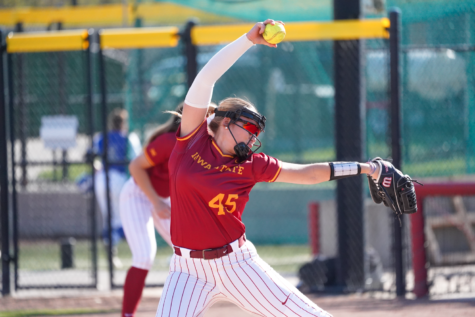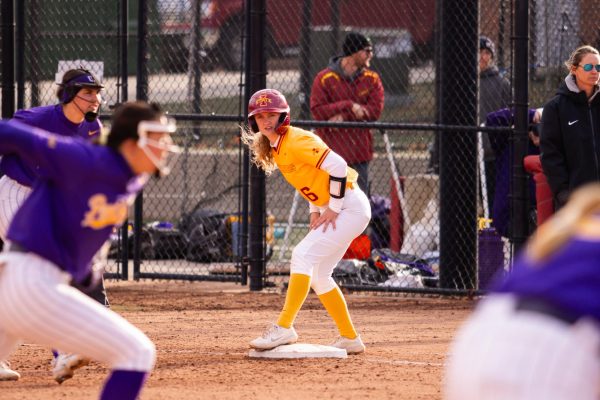The ropes and the reins, the joy and the pain
September 26, 2003
Imagine this: The sun is bearing down, hot on your back as you adjust your hat.
The wide brim shades your face so you can see the glare of the monster’s eyes staring you down, sizing you up.
For the next few moments, you will be king of the ring.
This is what it’s like to be a rodeo competitor.
At this weekend’s annual Cyclone Stampede, hundreds of competitors will ride, wrestle and lasso their way to victory.
“Some people you don’t even think do it,” said Tony Grieser, Stampede co-chair. “You have a class with him and you don’t even know.”
Grieser competed in the previous two stampede rodeos, but won’t be participating this weekend.
“I got hung up riding bulls,” Grieser said. So after a few bumps, bruises and broken ribs, Grieser has been forced to take some time off.
Minor injuries from bull riding are fairly common, he said, though injuries don’t happen as often in other rodeo events.
Most competitors participating this weekend have competed in rodeos prior to riding in Ames.
Don Hummel, ISU Rodeo Club adviser, said some people will go to a three-day school where they will learn the basics. Those who are in competition will practice every week, sometimes by riding the rodeo club’s mechanical bull.
“You have to practice on your own,” said Justin Jackson, senior in civil engineering. “There’s no coach. You have to be self-motivated.”
Jackson advanced from last year’s competition to the regional competition.
“[Regional competition included] the top 10 from our region, and the top 10 from the Rocky Mountain region,” Jackson says.
“I almost made it — I was close.”
The Cyclone Stampede, which is part of the National Intercollegiate Rodeo Association, started in 1958.
The event will host competitors from schools all over the Great Plains region, including Wisconsin, North Dakota, South Dakota and Nebraska.
Cyclone Stampede competitors must be members of the national organization, which requires a membership fee of $200. Separate from the membership fee, competitors must pay an entry fee of $50-70 for each event.
“It’s expensive,” Jackson said. “You put a lot of miles on your vehicle.”
And the incentive to win is much greater.
“The main reason [to win] is the money,” Jackson said.
The weekend will cost the Cyclone Stampede club approximately $12,000, Hummel said. With prizes funded by entry fees and admission fees and funding from the Government of the Student Body, the group hopes to break even every year.
Iowa State has the distinction of being the only Iowa college or university to fund a rodeo.
Jackson said he looks forward to winning his events again this year.
“You get addicted to it,” he said. “I plan on winning. I’ve got a really good chance.”
Hummel said that along with an adrenaline rush, there’s a certain skill and a challenge that comes with rodeo competition.
“You have to be able to get down and tie the calf. You have to be able to ride horses and rope at the same time. You have to try and figure out which way the animal will go,” Hummel said. “It’s very physical.”
Rodeo competition is a challenge, Grieser said, adding that rodeo is as much a sport as football or wrestling.
“Time kind of stops,” Grieser said of competition.
“I wish everyone could experience it.
“Your body kind of takes over — it’s amazing.”
















